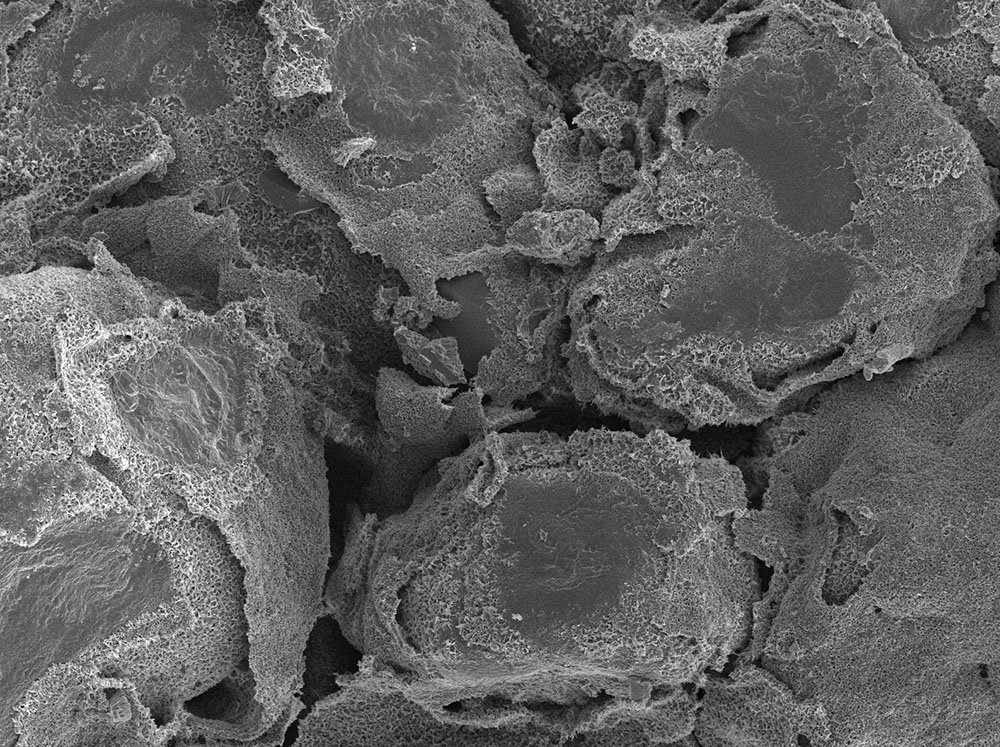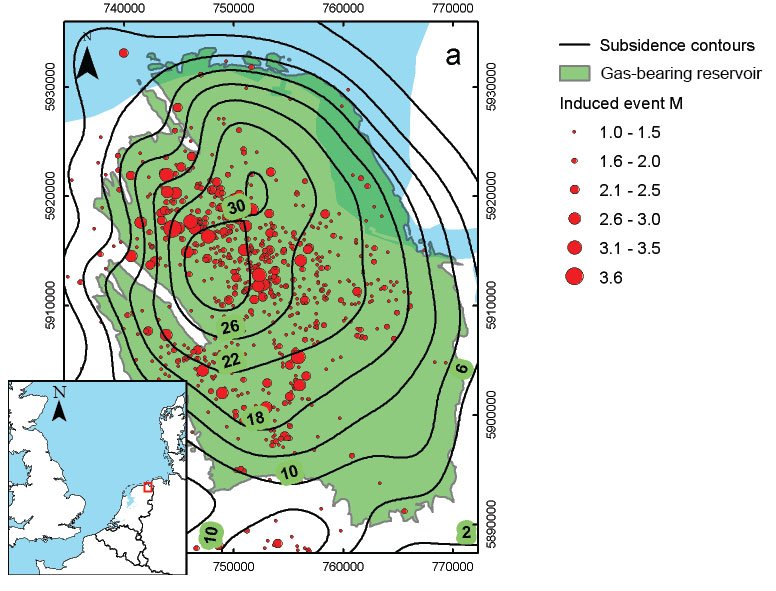Less energy for earthquakes through permanently compacted rock
When gas extraction in Groningen is stopped in 2022, there will be less energy available in the subsurface for earthquakes than was previously supposed. In his PhD research, earth scientist Ronald Pijnenburg from Utrecht University shows that thirty to fifty per cent of the gas-bearing sandstone in the subsurface of the Groningen gas field is permanently compacted, meaning that it cannot contribute to earthquakes.

Subsidence and earthquakes
Gas production can lead to subsidence and earthquakes, as seen in the Groningen gas field. Extracting the gas leads to reduced gas pressure in the pores of the gas-bearing sandstone, situated three kilometres below the Earth’s surface. The reduced gas pressure in the sandstone and the weight of the overlying rock cause the sandstone to compact slightly, which leads to surface subsidence.
But surface subsidence is not all that happens. The changes in pressure and associated compaction of the sandstone can lead to centimetre-sized movements along old faults, which may result in earthquakes. This is why it is important to know how the sandstone behaves during gas production.
Permanent compaction
It is often assumed that the compaction of the sandstone is fully reversible or elastic, but it may also be permanent. In reversible compaction, energy is stored in the sandstone and may be partially released during an earthquake. This is not the case where permanent compaction is concerned, such that it reduces the potential for earthquakes. On the other hand, in some cases, permanent compaction may mean that the process continues temporarily, even after gas extraction in Groningen is stopped in 2022.

Simulations
In order to gain more insight into these processes, Pijnenburg carried out laboratory experiments on sandstones from the Groningen gas field. In Utrecht University’s high pressure- and temperature lab, he simulated gas pressure reduction in samples of Groningen sandstone. He concluded that thirty to fifty per cent of the compaction is permanent. This means that there is thirty to fifty per cent less energy available for earthquakes than was previously supposed.
Thin clay rims
Microscope analyses show that this permanent compaction is largely caused by the compaction of micrometre-thin clay rims between the sand grains. This specific permanent compaction is rapid, which means that continued compaction of the gas-bearing sandstone after the cessation of gas production is likely to be very limited. Where clay rims are absent, compaction is likely to be less permanent.

